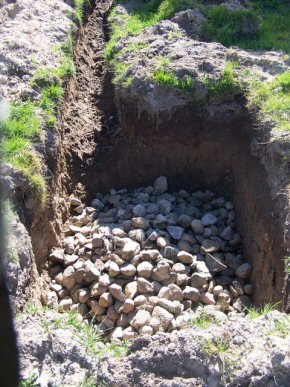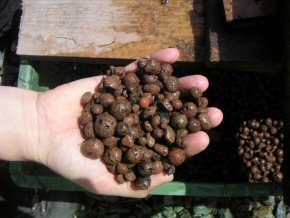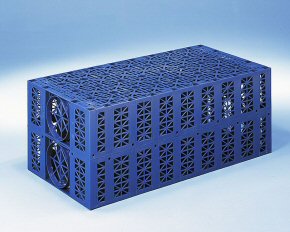Soakaways
An infiltration trench is a soakaway shaped geometrically like a trench, for example, 30 cm wide, 1 m deep and several metres long.
A soakaway (dry well, infiltration well) is a pit in the ground, stabilised with a porous material and covered with topsoil and vegetation. The long, narrow storage space produces a large wall area, thus achieving a shorter release time than a more cubic shape (see closed stormwater basin). Rainwater cannot be expected to seep through the bottom - over time it will fill up with silt. The soakaway elements are often wrapped in a geotextile membrane, which can be an advantage during the construction phase if the soil is loose. If the soil structure is good, the soakaway can function without geotextile.
Rain run-off is led via pipes or trenches to the soakaway, where the water is dammed and infiltrated into the surrounding soil, primarily through the side-walls of the soakaway, as the bottom has a tendency to silt up. To limit silting from particulate material, the water has to pass through a gully with a sludge trap prior to the inflow to the soakaway. Gravel has been commonly used as stabilisation material since time immemorial. Today, pre-fabricated bags of LECA pebbles can be used, along with plastic cassettes designed for the purpose, and with a significantly higher cavity percentage (˝). Figures 1 to 3 show soakaways stabilised with gravel (˝ = 20), LECA pebbles (˝ = 50) and soakaway units (˝ = 90). Soakaways can be designed as trenches or as vertical pipes with slits.

Figure 1: Soakaways stabilised with gravel (˝ = 20)

Figure 2: LECA pebbles (˝ = 50)

Figure 3: Soakaway unit (˝ = 90)

